This month sees the following articles in the Journal of Environmental Monitoring that are in the top ten most accessed:
Elevated antimony concentrations in commercial juices
Claus Hansen, Alexandra Tsirigotaki, Søren Alex Bak, Spiros A. Pergantis, Stefan Stürup, Bente Gammelgaard and Helle Rüsz Hansen
J. Environ. Monit., 2010, 12, 822-824
DOI: 10.1039/B926551A
Neglected sources of pharmaceuticals in river water—footprints of a Reggae festival
Atlasi Daneshvar, Jesper Svanfelt, Leif Kronberg and Gesa A. Weyhenmeyer
J. Environ. Monit., 2012, 14, 596-603
DOI: 10.1039/C1EM10551E
The release of engineered nanomaterials to the environment
Fadri Gottschalk and Bernd Nowack
J. Environ. Monit., 2011, 13, 1145-1155
DOI: 10.1039/C0EM00547A
The antibacterial effects of engineered nanomaterials: implications for wastewater treatment plants
Ndeke Musee, Melusi Thwala and Nomakhwezi Nota
J. Environ. Monit., 2011, 13, 1164-1183
DOI: 10.1039/C1EM10023H
Comparison of DNA extraction methodologies used for assessing fungal diversity via ITS sequencing
William R. Rittenour, Ju-Hyeong Park, Jean M. Cox-Ganser, Donald H. Beezhold and Brett J. Green
J. Environ. Monit., 2012, 14, 766-774
DOI: 10.1039/C2EM10779A
Quantitation of persistent organic pollutants adsorbed on plastic debris from the Northern Pacific Gyre’s “eastern garbage patch”
Lorena M. Rios, Patrick R. Jones, Charles Moore and Urja V. Narayan
J. Environ. Monit., 2010, 12, 2226-2236
DOI: 10.1039/C0EM00239A
Bioaerosol exposure assessment in the workplace: the past, present and recent advances
Wijnand Eduard, Dick Heederik, Caroline Duchaine and Brett James Green
J. Environ. Monit., 2012, 14, 334-339
DOI: 10.1039/C2EM10717A
Metal immobilization and phosphorus leaching after stabilization of pyrite ash contaminated soil by phosphate amendments
Marija Zupančič, Simona Lavrič and Peter Bukovec
J. Environ. Monit., 2012, 14, 704-710
DOI: 10.1039/C2EM10798H
Contamination of Canadian and European bottled waters with antimony from PET containers
William Shotyk, Michael Krachler and Bin Chen
J. Environ. Monit., 2006, 8, 288-292
DOI: 10.1039/B517844B
Temporal trend of mercury in polar bears (Ursus maritimus) from Svalbard using teeth as a biomonitoring tissue
Aurore Aubail, Rune Dietz, Frank Rigét, Christian Sonne, Øystein Wiig and Florence Caurant
J. Environ. Monit., 2012, 14, 56-63
DOI: 10.1039/C1EM10681C
Why not take a look at the articles today and blog your thoughts and comments below.
Fancy submitting an article to JEM? Then why not submit to us today or alternatively email us your suggestions.
 Researchers in Spain present an interesting critical review focusing on ways to assess the impact of fish farming waste waters on the environment in which they are situated.
Researchers in Spain present an interesting critical review focusing on ways to assess the impact of fish farming waste waters on the environment in which they are situated.












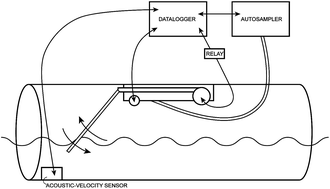 William Selbig, Amanda Cox and Roger Bannerman discuss the development of a new water sample collection system, to improve representation of solids entrained in urban stormwater by integrating water-quality samples from the entire water column, rather than a single, fixed point. They report that development of this new depth-integrated sample arm (DISA) was able to mitigate stratification bias resulting in a more accurate representation of stormwater-borne solids than traditional fixed-point sample collection methods.
William Selbig, Amanda Cox and Roger Bannerman discuss the development of a new water sample collection system, to improve representation of solids entrained in urban stormwater by integrating water-quality samples from the entire water column, rather than a single, fixed point. They report that development of this new depth-integrated sample arm (DISA) was able to mitigate stratification bias resulting in a more accurate representation of stormwater-borne solids than traditional fixed-point sample collection methods.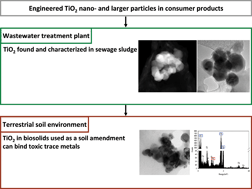 Bojeong Kim and colleagues from Virginia Tech and Duke University have investigated the characterization and environmental implications of nano- and larger TiO2 particles in sewage sludge and soils amended with sewage. They examined the most likely route of engineered TiO2 particles entering the soil environment by using analytical electron microscopic techniques, and provided detailed information regarding their occurrence, fate and behaviour in the sewage sludge materials and in mesocosm soils that had been amended with biosolid products.
Bojeong Kim and colleagues from Virginia Tech and Duke University have investigated the characterization and environmental implications of nano- and larger TiO2 particles in sewage sludge and soils amended with sewage. They examined the most likely route of engineered TiO2 particles entering the soil environment by using analytical electron microscopic techniques, and provided detailed information regarding their occurrence, fate and behaviour in the sewage sludge materials and in mesocosm soils that had been amended with biosolid products.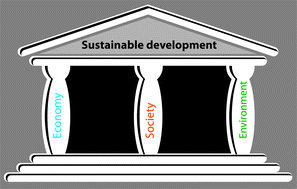 Just published is our latest
Just published is our latest 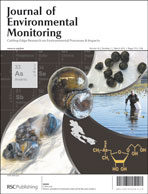 On the outside front cover of JEM
On the outside front cover of JEM 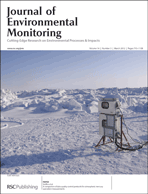 On the inside front cover is a HOT article from Alexandra Steffen and colleagues from Environment Canada and the National Atmospheric Deposition Program (NADP) at the University of Illinois, reporting on a comparison of their data quality control protocols for the measurement of atmospheric mercury species. The protocols RDMQ™ and AMQC were developed independently by Environment Canada and the NADP respectively, and have been assessed by the criteria on which the data is quality controlled and comparability of the final data products.
On the inside front cover is a HOT article from Alexandra Steffen and colleagues from Environment Canada and the National Atmospheric Deposition Program (NADP) at the University of Illinois, reporting on a comparison of their data quality control protocols for the measurement of atmospheric mercury species. The protocols RDMQ™ and AMQC were developed independently by Environment Canada and the NADP respectively, and have been assessed by the criteria on which the data is quality controlled and comparability of the final data products.